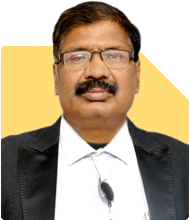College options at 93 percentile in JSS, KIET, GL Bajaj, VIT Vellore, Manipal, PES?
Rajesh Kumar Singh | Answer |Ask -Follow
IIT-JEE, GATE Expert - Answered on Mar 21, 2025
During his career, he has served as the head of the mining department and as vice president of Balasore Alloys. He is currently a visiting professor at Mewar University where he teaches BTech students.
Rajesh Kumar topped his batch in BTech mining from BIT, Sindri.
A gold medallist, he has cracked the GATE (Graduate Aptitude Test in Engineering) twice -- in 1993 and 1994 -- with an All India Rank of 14 in 1994.
He has also cleared the Indian Institute of Corporate Affairs (IICA) Independent Director Test.... more

sir pls suggest about college option at 93 percentile like local uptu colleges like jss, kiet ghaziabad , gl bajaj or colleges like vit vellore category 1 , manipal main campus , or pes university
You may like to see similar questions and answers below
Prof Suvasish Mukhopadhyay | Answer |Ask -Follow
Career Counsellor - Answered on Apr 05, 2025
Mayank Chandel |2562 Answers |Ask -Follow
IIT-JEE, NEET-UG, SAT, CLAT, CA, CS Exam Expert - Answered on May 22, 2025
Radheshyam Zanwar |6731 Answers |Ask -Follow
MHT-CET, IIT-JEE, NEET-UG Expert - Answered on May 28, 2025
Dr Dipankar Dutta |1836 Answers |Ask -Follow
Tech Careers and Skill Development Expert - Answered on Dec 05, 2025
Ulhas Joshi |280 Answers |Ask -Follow
Mutual Fund Expert - Answered on Dec 05, 2025
Dr Dipankar Dutta |1836 Answers |Ask -Follow
Tech Careers and Skill Development Expert - Answered on Dec 04, 2025
Ravi Mittal |676 Answers |Ask -Follow
Dating, Relationships Expert - Answered on Dec 04, 2025
Anu Krishna |1745 Answers |Ask -Follow
Relationships Expert, Mind Coach - Answered on Dec 04, 2025
Anu Krishna |1745 Answers |Ask -Follow
Relationships Expert, Mind Coach - Answered on Dec 04, 2025
Mayank Chandel |2562 Answers |Ask -Follow
IIT-JEE, NEET-UG, SAT, CLAT, CA, CS Exam Expert - Answered on Dec 04, 2025
Mayank Chandel |2562 Answers |Ask -Follow
IIT-JEE, NEET-UG, SAT, CLAT, CA, CS Exam Expert - Answered on Dec 04, 2025
Mayank Chandel |2562 Answers |Ask -Follow
IIT-JEE, NEET-UG, SAT, CLAT, CA, CS Exam Expert - Answered on Dec 04, 2025
Mayank Chandel |2562 Answers |Ask -Follow
IIT-JEE, NEET-UG, SAT, CLAT, CA, CS Exam Expert - Answered on Dec 04, 2025























